Relevant to a discussion about the rise of "stars" in Academic lit crit in the 1980s and 90s. See especially discussions of Reading and Theory as Critique below, which speak to the erosion of boundaries that allows critics to become stars.In the fifth post, It’s Time to Leave the Sandbox, in my series on the poverty of cognitive criticism I managed to rough out a sketch of academic literary criticism that I rather like. So I’ve decided to present that sketch in a post of its own. I’ve dropped most of the comments on cognitive criticism and added a few things.
The most important additions come from the study Andrew Goldstone and Ted Underwood did of a century-long run of articles in seven journals, The Quiet Transformation of Literary Studies [1]. These are the journals they used: Critical Inquiry (1974–2013), ELH (1934–2013), Modern Language Review (1905–2013), Modern Philology (1903–2013), New Literary History (1969–2012), PMLA (1889–2007), and the Review of English Studies (1925–2012).
I begin by presenting one aspect of the argument that Goldstone and Underwood make, that our current terms of critical art only because established after World War II. Then I present the material I’ve reworked from that older post, this time with some charts from Goldstone and Underwood, and so other things as well.
Post War Shift
Goldstone and Underwood demonstrate that perhaps the most significant change in the discipline happened in the quarter century or so after World War II. Here’s a summary statement (p. 372):
The model indicates that the conceptual building blocks of contemporary literary study become prominent as scholarly key terms only in the decades after the war—and some not until the 1980s. We suggest, speculatively, that this pattern testifies not to the rejection but to the naturalization of literary criticism in scholarship. It becomes part of the shared atmosphere of literary study, a taken-for-granted part of the doxa of literary scholarship. Whereas in the prewar decades, other, more descriptive modes of scholarship were important, the post-1970 discourses of the literary, interpretation, and reading all suggest a shared agreement that these are the true objects and aims of literary study—as the critics believed. If criticism itself was no longer the most prominent idea under discussion, this was likely due to the tacit acceptance of its premises, not their supersession.
Consider topic 16, where these are the ten most prominent words: criticism work critical theory art critics critic nature method view. This graph shows how that topic evolved in prominence over time:
Now consider topic 29: image time first images theme structure imagery final present pattern. Notice “structure” and “pattern” in that list. The (in)famous structualism conference was held at Johns Hopkins in 1966, just before the peak in the chart, while the conference proceedings (The Languages of Criticism and the Sciences of Man) were published in 1970, one year after the peak, 1969:
At the time structuralism was regarded as The Next Big Thing, hence the conference. But Jacques Derrida was brought in as a last minute replacement and his critique of Lévi-Strauss turned out to be the beginning of the end of structuralism and the beginning of the various developments that came to be called capital “T” Theory. The structuralist moment, with its focus on language, signs, and system, was but a turning point.
The next two charts show Theory to be firmly in place.
Topic 39 centers on interpretation and meaning: interpretation meaning text theory intention interpretive interpretations context meanings literary.
Topic 143 emphasizes culture and critique: new cultural culture theory critical studies contemporary intellectual political essay.
The Critic’s Sandbox
Let’s frame this transition a not-entirely-serious way. In effect, the American academy had come to agree on one basic modus operandi: The literary text is a mental sandbox in which the critic plays with his or her favorite conceptual toys. The metaphor, I suppose, is a bit pejorative, as it is children who play in sandboxes. I note, however, that I have fond memories of my early childhood when I could become so thoroughly immersed in sandbox adventures that it was almost painful to break them off in order to go to dinner. Moreover I have a keen sense of the larger cultural value of play, as articulated in Huizinga’s classic Homo Ludens, for example, and so I do not regard my sandbox days as being entirely of the past.
While the roots of this new dispensation extend back into the 1920s, and perhaps a bit earlier, it didn’t spread throughout the discipline until after the war. The New Critics used the idea of form to isolate the text from external influences, authorial intention, reader affect, and history. Because their conceptual toys – the ideas of ambiguity and paradox coupled with humanism (secular or Christian) – were invisible as such, they could present this as an act of austere purification in which messy value judgments and historical and biographical entanglements could be left behind.
Once the New Critics had thus transformed the text into an intellectual testing ground, a humanist’s sandbox, other critics brought in more obtrusive intellectual toys: psychoanalysis, phenomenology, Marxism, structuralism, deconstruction, feminism and the other isms, and now cognitive science and evolutionary psychology. The new historicists have been fighting a highly successful rear-guard action by bracketing all theory toys and privileging a somewhat different set of toys, non-literary texts roughly contemporaneous with the texts under examination. At various points along the way the new set of toys would be brought online through a rhetoric of revolution and renewal, but the basic procedure remained the same: declare the sandbox to be liberated, toss out the old toys and bring in the new. Same sandbox, new toys.
This modus operandi was underwritten by a tacit agreement that any reading of a text was legitimate as long as it was supported by a suitable rationale, of which there are now many kinds. This professional courtesy inevitably led not merely to a multiplicity of readings, but to divergent and contradictory readings. Some critics saw this as evidence of the richness of canonical literary texts while others saw it as evidence of epistemological and methodological inadequacy.
The latter have argued their case from time to time, but have yet been able to inspire a discipline-wide austerity program that has narrowed the range of legitimate readings to one per text. The strongest and most sustained argumentation took place in the 1960s and 1970s, the period when criticism finally settled in. By the 1980s that debate had all but disappeared into the woodwork. The holdouts for one-text-one-reading have had little choice but to agree to the same old unwritten tacit agreement: Let 10,000 flowers bloom.
With the interesting exception of recent digital criticism (which I’ll discuss in a later post [2]) the conceptual toys in this text-as-sandbox have been fundamentally discursive in nature. That is, the central thinking takes place in the prose on the page. That is true of most humanities disciplines. But it is not generally true. There are other modes of thought, modes where prose plays a different role.
That is true of the cognitive sciences, where the central thinking often takes place in some other medium and prose exists to support that non-discursive thought. Some of this thinking takes the form of laboratory observations and the subsequent statistical analysis of data. Other thinking takes place in the proof structures and equations of mathematical modeling. And of course we have thinking that is embedded in computer simulations.
Every once in awhile a simple diagram will show up. And during the brief flirtation with structuralism in the 1960s and 1980s there was also some interest in generative grammar, which prompted some stylisticians to draw tree diagrams, but for the most part literary criticism has remained a discursive domain.
Text, Reader, and Form
This critical sandbox has a number of characteristics. Though each deserves extended discussion of its own, I’m simply going to list them here and provide relatively short accounts. I list three characteristics here and two somewhat more complex ones in the next section.
1) Reading: The distinction between ordinary reading, which everyone does, and interpretive reading, the province of literary critics, is elided. Critics “read” texts and so create “readings”. While the interpretive reading of religious texts is an ancient activity, the routine interpretive reading of literary texts is, as we’ve already seen, relatively new. This use of “reading” has become so ingrained that critics will sometimes talk as though interpretive reading were the only real reading, leading you to wonder how literary culture ever managed to survive without interpretive critics. [3]
Topic 20 in Goldstone and Underwood seems weighted toward the current dispensation: reading text reader read readers texts textual woolf essay Virginia.
Topic 117 seems to reflect a more prosaic usage, where reading is mostly just reading, not hermeneutics: text ms line reading mss other two lines first scribe.
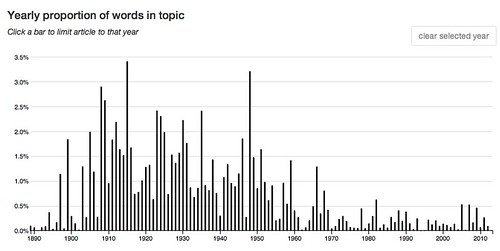
2) The Text: The distinction between the text as physical object (marks on pages, pages bound into books) and whatever it means and whatever it represents is elided. While there are times and places when critics mean only physical marks or sounds, the signifiers, these tend to be in discussions of theory and/or method. In practical criticism the text is always something more than, in excess of, the marks on the page. The job of the critic, then, is to explicate that excess by providing a reading. [4]
This is the world in which there is nothing outside the text. But the text is no longer just vibrations in air or marks on a page. Rather it has come to include everything necessary to explain those marks and vibrations and they power they have over and through us.
We see this newer dispensation in topic 100: text discourse genre literary theory texts first two system genres.
Topic 117 (again) gives us a text that is marks on a paper: text ms line reading mss other two lines first scribe.
3) “Form” becomes either a synonym for genre – tragedies and sonnets are forms – or a philosophical declaration of textual autonomy. The purpose of that declaration is to enable a critical practice that focuses exclusively on “the text” as its object so the critic can then “read” it. Thus “close reading” does not involve sustained attention to a text’s form. Formal features may well be noticed as they contribute to the critic’s interpretive strategy, but form is otherwise a secondary matter. Thus, in a recent article on form, Sandra Macpherson notes that, while looking for form, critics still are unable to focus on the physical shape of the text [5].
Form has been one of the central concepts in literary studies and shows up in a number of topics (Goldstone and Underwood, p. 374), but none of them involve description at the level of detail that I think will be necessary in the future. When I consider the practical details of my own descriptive work I find that I almost always make essential use of some non-discursive form of representation, whether diagrams of one kind or another (some moderately elaborate) or analytical tables. Thus I suspect that, just as naturalists have had recourse to drawings in describing flora and fauna, so descriptive critics need some visual representation in order to represent the formal features of texts.
Creeping Mimesis, or the Transparent Text
Now things get complicated. As the written text comes to spread itself into the mind and outward to the world, discussion of that text becomes discussion of the world and literary criticism becomes socio-political critique. In effect, the text, in the narrow sense of ink splotches on a page, becomes a window on the world. The written text has become transparent – except in those (now rare?) deconstructive moments when the critic attends to its tricks.
Plato must be spinning furiously in his grave, for he warned us about treating imitations (literary words) of imitations (the phenomena of the world) as though they gave true knowledge of real things (the ideal forms). Contemporary criticism and critique seems drawn to this now transparent text as Icarus to the sun. This characteristic shows up in a specific way, how we treat literary characters, and in more general ways.
Plato must be spinning furiously in his grave, for he warned us about treating imitations (literary words) of imitations (the phenomena of the world) as though they gave true knowledge of real things (the ideal forms). Contemporary criticism and critique seems drawn to this now transparent text as Icarus to the sun. This characteristic shows up in a specific way, how we treat literary characters, and in more general ways.
4) Characters are People: We of course know that fictional characters are just that, fictions. But more is at stake than that simple acknowledgment.
If you’ve spent any time in fan culture, either as a participant or merely observing, you know that fans of popular TV shows and movies, are willing to speculate freely about characters lives beyond what actually happens on screen. Some fans will write fiction about such events, fan fiction. Literary critics don’t do this, though rumor has it that something very like it went on in the distant past.
But consider this passage in which A. C. Bradley talks about Othello (in Shakespearean Tragedy, 1919):
But consider this passage in which A. C. Bradley talks about Othello (in Shakespearean Tragedy, 1919):
He has watched with a poet's eye the Arabian trees dropping their med'cinable gum, and the Indian throwing away his chance-found pearl; and has gazed in a fascinated dream at the Pontic sea rushing, never to return, to the Propontic and the Hellespont; and has felt as no other man ever felt (for he speaks of it as none other ever did) the poetry of the pride, pomp, and circumstance of glorious war.So he comes before us, dark and grand, with a light upon him from the sun where he was born; but no longer young, and now grave, self-controlled, steeled by the experience of countless perils, hardships and vicissitudes, at once simple and stately in bearing and in speech, a great man naturally modest but fully conscious of his worth, proud of his services to the state, unawed by dignitaries and unelated by honours, secure, it would seem, against all dangers from without and all rebellion from within. And he comes to have his life crowned with the final glory of love, a love as strange, adventurous and romantic as any passage of his eventful history, filling his heart with tenderness and his imagination with ecstasy. For there is no love, not that of Romeo in his youth, more steeped in imagination than Othello's.
Critics don’t write that way anymore. Bradley has invested Othello with a kind of realness that is irrelevant for our post-war critical purposes. We’ve left that behind us.
But more recent psychoanalytic critics have not hesitated to make analytic observations about the minds of literary characters, though they cannot, of course, interact with them in analytic session. Such speculation seems quite natural – I’ve done it myself. But it is one thing to treat characters as people while we’re reading the story or watching the play or movie. It is something else to do so as critics. As William Flesch remarks about literary Darwinists:
they treat literary characters as motivated by the same things that motivate real humans, rather than as representations to whom real humans react. It’s our reactions that psychology can analyze, not the actions of literary characters” (note on p. 231 in Comeuppance [6]).
I quite agree, and the Darwinists are not the only transgressors. But creating a critical idiom that follows that principle is difficult.
5) Theory as Critique: Over time the theory of literature morphed into critical theory, which in turn became Theory, though the capitalization of the initial “t” is optional. In Theory one uses various bodies of political, social, psychological or philosophical theory as ways to interrogate the expanded text (or, alternatively, to examine the world revealed through the transparent text) and present the result, not as criticism of a verbal artifact, but as critique of the social and political world.
During the 1950 and well into the 1960s theory of literature was just that, theory about literature. Theory of Literature (1948) by Rene Wellek and Austin Warren was the touchstone text. In the later 1960s and into the 1970s critical theory came to the fore; it was about, not literature, but about literary criticism. Perhaps the central issue was whether texts had only one legitimate meaning or several.
In the 1980s critical theory collapsed into theory, and then Theory. Critical practice was no longer the object of inquiry. Rather theory/Theory had become a menu of interpretive schemes to be applied to texts – Marxist, psychoanalytic, deconstructive, feminist, and so forth. Criticism merges with literature and critical reading, explicit written interpretation, becomes the only true reading. The distinction between literature and criticism of literature is all but gone as the two merged into critique.
Here’s what Goldstone and Underwood say about the upshot of this evolution (p. 376):
The historical and cultural turn of literary scholarship is attested to in a series of topics that begin their ascent in the late 1970s or 1980s and rise into the present (fig. 7): topics 15 history historical new modern; 143 new cultural culture theory; 138 social society public class; and 58 social work form own, which labels Marxist terms of discourse. In the last three decades literary studies has, in our model, taken a striking turn towards discussing—or theorizing, or criticizing; the topic model does not tell us which—the subject matter of the social sciences. […]One might have expected a sharp “New Historical” rise and fall to match the earlier critical or deconstructive spikes we discussed above, perhaps centering on discussions about historicist method; instead, we see a broad movement into a whole family of new themes that grow in parallel, all of them couched in at least partly novel vocabularies. The familiarity of the recent topics in figure 7 belies the extraordinary change in literary scholarship’s orientation in the space of the last generation. In this case, unlike in the earlier transition from the interests of philological scholarship to those of criticism in the midcentury, the changing scholarly language gives fewer clues to changing method; it is alteration of subject matter that appears most consequential from the perspective of our model.
In support of this they present a number of topics, from which I’ve selected four:
Topic 143: new cultural culture theory critical studies contemporary intellectual political essay.
Topic 15: history historical new modern time past century present age first.
Topic 58: social work form own ideology society material production critique forms.
Topic 77: human moral own world see philosophy ethical life social philosophical.
Criticism (Value Judgment) Denied
There is one final property of the critical sandbox: It denies criticism, as the term is ordinarily understood. Ostensibly, literary critics do not pass aesthetic judgments on literary texts nor do they explore the ethical implications of texts. At least that’s the more or less official ideology of literary criticism. In practice both things are done.
The reasoning seems to have been that if literary academics are going to engage in examining and commenting on texts, the work must be more intellectually substantial than the worlds of belles-lettres and journalistic reviewing. Thus, in the introduction to his well-known Anatomy of Criticism (1957), Frye asserts criticism’s claims to science:
Evidence is examined scientifically; previous authorities are used scientifically; fields are investigated scientifically; texts are edited scientifically. Prosody is scientific in structure; so is phonetics; so is philology. Either literary criticism is scientific, or all these highly trained and intelligent scholars are wasting their time on some kind of pseudo-science like phrenology. Yet one is forced to wonder whether scholars realize the implications of the fact that their work is scientific. In the growing complication of secondary sources one misses that sense of consolidating progress which belongs to a science. Research begins in what is known as "background," and one would expect it, as it goes on, to start organizing the foreground as well. Telling us what we should know about literature ought to fulfill itself in telling us something about what it is. As soon as it comes to this point, scholarship seems to be dammed by some kind of barrier, and washes back into further research projects.
Later on he will relegate the making of value judgments to the history of taste:
Value-judgements are subjective in the sense that they can be indirectly but not directly communicated. When they are fashionable or generally accepted, they look objective, but that is all. The demonstrable value-judgement is the donkey's carrot of literary criticism, and every new critical fashion, such as the current fashion for elaborate rhetorical analysis, has been accompanied by a belief that criticism has finally devised a definitive technique for separating the excellent from the less excellent. But this always turns out to be an illusion of the history of taste. Value-judgements are founded on the study of literature; the study of literature can never be founded on value-judgements. Shakespeare, we say, was one of a group of English dramatists working around 1600, and also one of the great poets of the world. The first part of this is a statement of fact, the second a value-judgement so generally accepted as to pass for a statement of fact. But it is not a statement of fact. It remains a value judgement, and not a shred of systematic criticism can ever be attached to it.
The profession was happy to see in Frye’s statement a statement of its aims and desires and has more or less struggled to continue under that dispensation, even when critique had become a preferred term of art.
Interestingly enough, one can see how the denial of value judgements facilitated the collapse of literary theory, the theory of literature, into Theory, where literary criticism becomes socio-cultural critique. That would have been harder to do if critics where making explicit aesthetic judgments about texts, for such judgments necessarily foreground the fact that they ARE just literary texts and thus make it a bit more difficult to think that the critic is directly in touch with various nefarious hegemonic forces. Aesthetic evaluation makes one aware of the text, in the narrow sense of ink splotches on a page, and thereby makes the more expansive notion seem as problematic as it in fact is.
By denying criticism, the discipline made critique inevitable.
What’s Next?
There’s now widespread recognition within the profession that something must be done, but no consensus on what that should be. The major issue, it seems to me, is whether or not literary criticism is committed to the methodological primacy of discursive methods of thought deployed in the critic’s text-as-sandbox, as I have called it. I think that restriction would turn literary criticism into a historical curiosity, but that’s an argument for another time and place.
References
[1] Andrew Goldstone and Ted Underwood , “The Quiet Transformations of Literary Studies: What Thirteen Thousand Scholars Could Tell Us”. New Literary History 45, no. 3, Summer 2014. Goldstone has created a website where you can examine the topic model; That’s where I obtained the figures I’m using in this post: http://andrewgoldstone.com/blog/2014/05/29/quiet/
Here you can find a preliminary discussion, What can topic models of PMLA teach us about the history of literary scholarship?:
[2] Of course, I’ve given extensive coverage to digital criticism in the last two years. I’ve published a post at 3 Quarks Daily arguing that it’s the most likely means of breaking the current log-jam in literary studies: The Only Game in Town: Digital Criticism Comes of Age, URL: http://www.3quarksdaily.com/3quarksdaily/2014/05/the-only-game-in-town-digital-criticism-comes-of-age.html
This link will fish up all digital humanities posts on New Savanna: http://new-savanna.blogspot.com/search/label/digital%20humanities
[3] I’ve written a number of posts about this. You can find them collected under the tag “reading>reading”, URL: https://www.blogger.com/blogger.g?blogID=6535481649727720492#allposts
[4] On the concept of the text, see for example, Rita Copeland and Frances Ferguson. Introduction. ELH. Volume 81, Number 2, Summer 2014, pp. 417-422. This introduces a suite of articles: Essays from the English Institute 2012: Text.
See also my blog post, Texts, Traces, and Hyperobjects. March 19, 2011. URL: http://new-savanna.blogspot.com/2011/03/texts-traces-and-hyperobjects.html
[5] Sandra Macpherson, A Little Formalism, ELH, Volume 82, Number 2, pp. 385-405, Summer 2015.
[6] William Flesch. Comuppance: Costly Signaling, Altruistic Punishment, and other Biological Components of Fiction. Harvard University Press, Cambridge, Massachusetts and London: 2007. 252 pp.
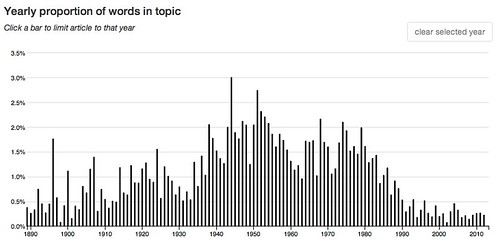
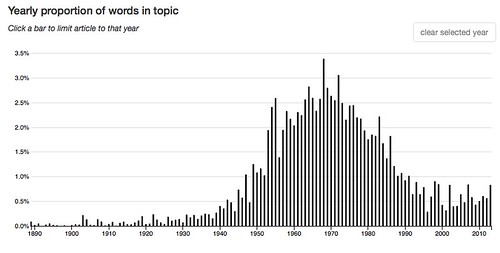



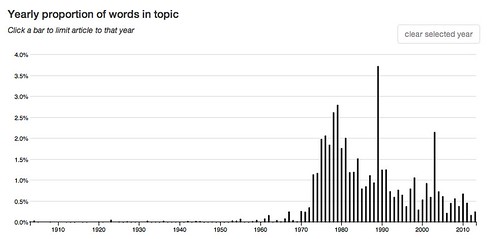

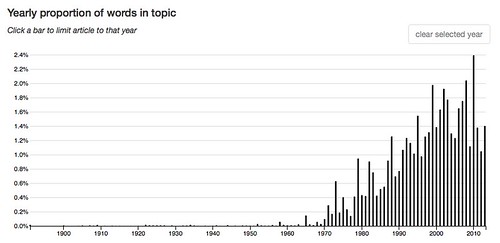

No comments:
Post a Comment